
Many of the people in the video spent their early lives living in a Japan that was ruled by a shogun.
Japan spent the 17th and 18th centuries, as well as the majority of the 19th, in a state of government-imposed isolation, separating it from the technological advancements of the rest of the world. Once the country was finally opened to the international community, it put great efforts into modernizing as quickly as possible, making photos of the traditional Japan that had existed for generations hard to come by.
Even rarer, though, is film that preserves the sights of old Japan. Brief clips do exist, though, such as this fascinating street scene filmed in Japan in 1897, year 30 of the Meiji era.
https://www.youtube.com/watch?v=lvnfmY5kZhc
The rustic wooden architecture and dirt street may have you thinking this is a look back at one of Japan’s minor villages, but that’s not the case at all. The film, recorded by French filmmaker and visual travelogue pioneer Constant Girel, was filmed on January 9, 1897, in Tokyo, and not in the far-flung outskirts of the capital. The street where Girel set up his camera was in the Nihonbashi district, not far from the Imperial Palace, and to show just how much the neighborhood has changed in the 122 years since, here’s what it looks like today.
Nihonbashi isn’t far from present-day Tokyo Station, where over a dozen train and subway lines, including Shinkansen bullet trains, converge. Girel’s video, though, predates the station’s construction by almost 20 years, and instead shows people getting around by foot, horse-drawn carriage, or rickshaw.
▼ Tokyo Station’s Nihonbashi entrance
With Girel’s film having been made just 30 years after the end of Japan’s feudal era, a movie camera, as well as a foreigner himself, were still unusual in Japan. Passersby, many of whom are old enough to remember first-hand a time when Japan was still ruled by a shogun, stop and stare at the unfamiliar sight.
At one point, though, a stately looking gentleman rolls up in a rickshaw. As he steps down into the street, we can see that he’s paired his traditional kimono with a Western-style top hat. It’s an early example of Japan’s enthusiasm for adopting eclectic cultural influences, and also a reminder that even the most ordinary snippets of daily life can one day become a fascinating preservation of a moment in history.
Source: YouTube/iconauta via Japaaan, Catalogue Lumiere
Top image: YouTube/iconauta
Insert images: Pakutaso, YouTube/iconauta, Wikipedia/Gungun01

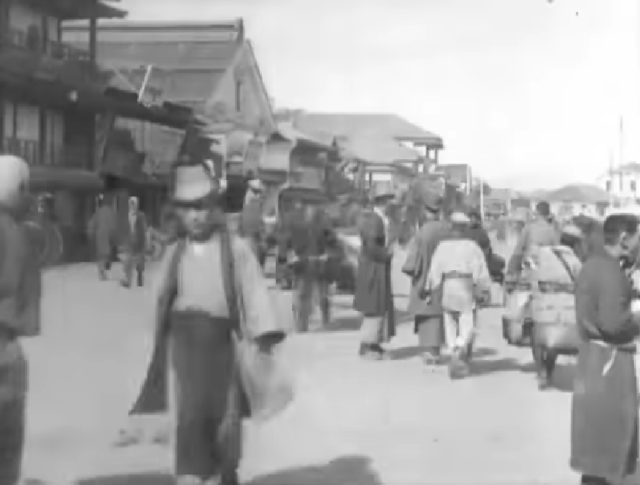
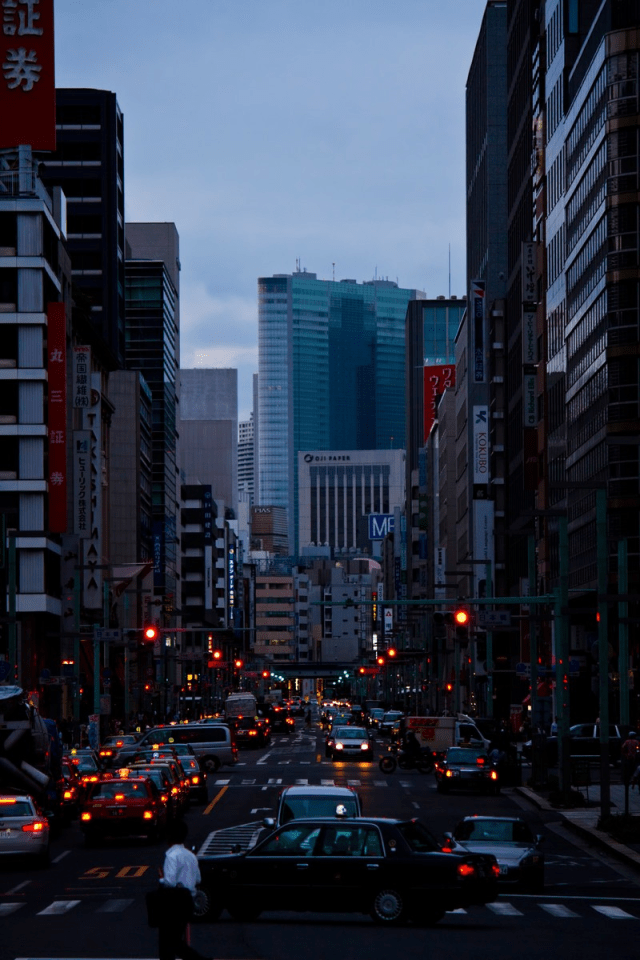
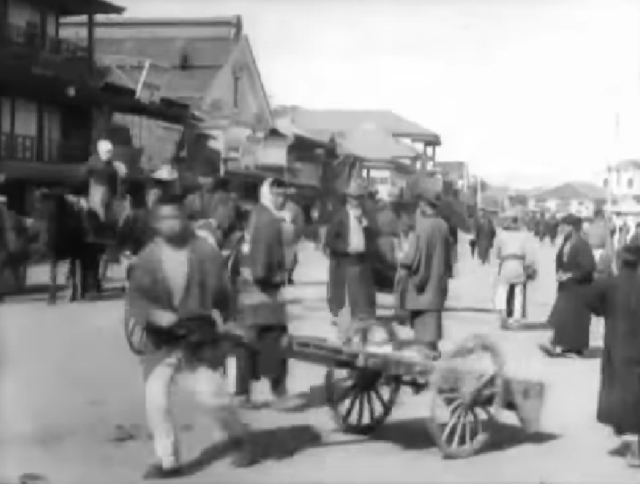
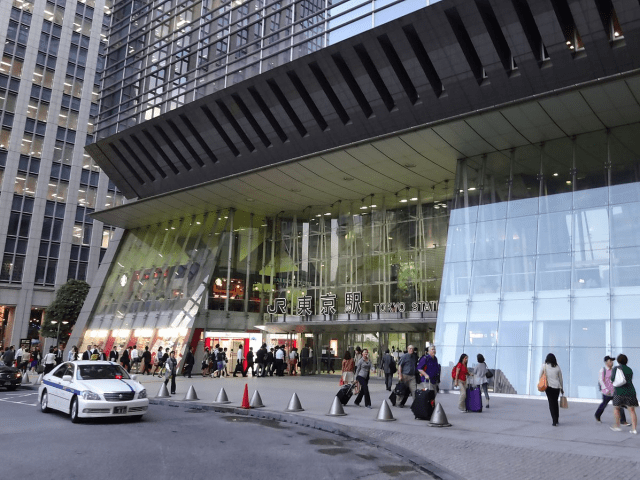
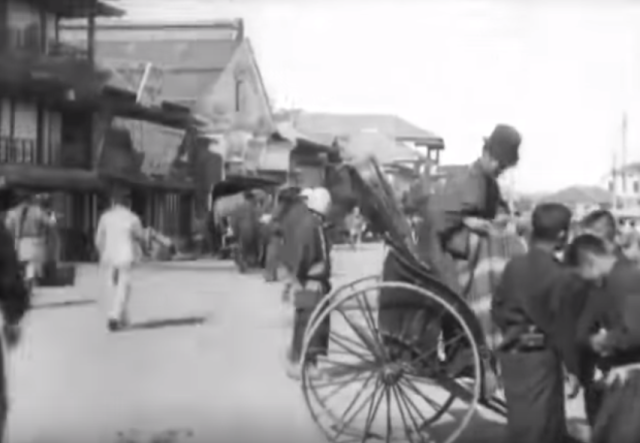
 Japanese video shows what life was like in Tokyo and Mt Fuji over 100 years ago
Japanese video shows what life was like in Tokyo and Mt Fuji over 100 years ago Old postcards reveal famous Japanese tourist spots as they appeared 100 years ago
Old postcards reveal famous Japanese tourist spots as they appeared 100 years ago What did Japanese curry taste like 150 years ago? This instant curry pack lets you find out
What did Japanese curry taste like 150 years ago? This instant curry pack lets you find out Handsome Japanese rickshaw drivers get hot and steamy in their new music video
Handsome Japanese rickshaw drivers get hot and steamy in their new music video These photos show how Japanese architecture has changed over the last 100 years
These photos show how Japanese architecture has changed over the last 100 years Top Japanese cosplayer Enako returns to Comiket after 6 years, creates mayhem with admirers
Top Japanese cosplayer Enako returns to Comiket after 6 years, creates mayhem with admirers Private booths are coming to Japan’s Shinkansen bullet trains even sooner than we’d thought【Video】
Private booths are coming to Japan’s Shinkansen bullet trains even sooner than we’d thought【Video】 What makes a good boss in Japan? Workers sound off in survey
What makes a good boss in Japan? Workers sound off in survey Stamina-destroying “Paralysis Noodles” are Tokyo’s newest over-the-top ramen innovation
Stamina-destroying “Paralysis Noodles” are Tokyo’s newest over-the-top ramen innovation A surprising number of Japanese youth get most of their income from their parents
A surprising number of Japanese youth get most of their income from their parents Bear attack shelters going on sale in Japan as country experiences record-high number of incidents
Bear attack shelters going on sale in Japan as country experiences record-high number of incidents Japan’s otoshidama tradition of giving kids money at New Year’s gets a social welfare upgrade
Japan’s otoshidama tradition of giving kids money at New Year’s gets a social welfare upgrade Weird Japanese vending machine find of the day: Cream in cans?
Weird Japanese vending machine find of the day: Cream in cans? One in four surveyed Japanese workers admits to wanting to kill boss, Osaka quake helps show why
One in four surveyed Japanese workers admits to wanting to kill boss, Osaka quake helps show why Japanese department store rooftop is a secret oasis where you can escape the crowds in Tokyo
Japanese department store rooftop is a secret oasis where you can escape the crowds in Tokyo Starbucks Japan ready to get Year of the Horse started with adorable drinkware and plushies【Pics】
Starbucks Japan ready to get Year of the Horse started with adorable drinkware and plushies【Pics】 Japanese beef bowl chain Sukiya’s 2026 Smile Box lucky bag basically pays for itself
Japanese beef bowl chain Sukiya’s 2026 Smile Box lucky bag basically pays for itself Hayao Miyazaki says Happy New Year to Studio Ghibli fans with new art for Year of the Horse
Hayao Miyazaki says Happy New Year to Studio Ghibli fans with new art for Year of the Horse Cup Noodle tries an authentic Jiro-style ramen, but something’s not quite right
Cup Noodle tries an authentic Jiro-style ramen, but something’s not quite right The best Starbucks Japan Frappuccinos we want to drink again in 2026
The best Starbucks Japan Frappuccinos we want to drink again in 2026 We revisited Sweets Paradise after a decade to see if Japan’s dessert buffet still delivers
We revisited Sweets Paradise after a decade to see if Japan’s dessert buffet still delivers That time Seiji called JASRAC to ask why he didn’t get paid royalties for his song being on TV
That time Seiji called JASRAC to ask why he didn’t get paid royalties for his song being on TV We found possibly the quietest Japanese-style hotel in Tokyo’s bustling Shinjuku district
We found possibly the quietest Japanese-style hotel in Tokyo’s bustling Shinjuku district Pizza Hut Japan’s hot lucky bags are perfect for a New Year’s pizza party
Pizza Hut Japan’s hot lucky bags are perfect for a New Year’s pizza party Japan’s oldest largetooth sawfish in captivity back on display in Mie Prefecture
Japan’s oldest largetooth sawfish in captivity back on display in Mie Prefecture 7-Eleven Japan starts new temporary luggage storage service in over 300 branches
7-Eleven Japan starts new temporary luggage storage service in over 300 branches Disillusionment at Tsukiji’s tourist-target prices led us to a great ramen restaurant in Tokyo
Disillusionment at Tsukiji’s tourist-target prices led us to a great ramen restaurant in Tokyo Starbucks teams up with 166-year-old Kyoto doll maker for Year of the Horse decorations【Photos】
Starbucks teams up with 166-year-old Kyoto doll maker for Year of the Horse decorations【Photos】 Tokyo considering law requiring more trash cans following litter increase in heavily touristed area
Tokyo considering law requiring more trash cans following litter increase in heavily touristed area Tokyo’s Tsukiji sushi neighborhood asks tour groups to stay away for the rest of the month
Tokyo’s Tsukiji sushi neighborhood asks tour groups to stay away for the rest of the month Tokyo event lets you travel back in time, for free, to celebrate 100 years since Showa era start
Tokyo event lets you travel back in time, for free, to celebrate 100 years since Showa era start Japan may add Japanese language proficiency, lifestyle classes to permanent foreign resident requirements
Japan may add Japanese language proficiency, lifestyle classes to permanent foreign resident requirements Sanrio theme park in Japan announces plans to expand into a Sanrio resort
Sanrio theme park in Japan announces plans to expand into a Sanrio resort Survey asks foreign tourists what bothered them in Japan, more than half gave same answer
Survey asks foreign tourists what bothered them in Japan, more than half gave same answer Japan’s human washing machines will go on sale to general public, demos to be held in Tokyo
Japan’s human washing machines will go on sale to general public, demos to be held in Tokyo Japan’s deadliest food claims more victims, but why do people keep eating it for New Year’s?
Japan’s deadliest food claims more victims, but why do people keep eating it for New Year’s? We deeply regret going into this tunnel on our walk in the mountains of Japan
We deeply regret going into this tunnel on our walk in the mountains of Japan Studio Ghibli releases Kodama forest spirits from Princess Mononoke to light up your home
Studio Ghibli releases Kodama forest spirits from Princess Mononoke to light up your home Major Japanese hotel chain says reservations via overseas booking sites may not be valid
Major Japanese hotel chain says reservations via overseas booking sites may not be valid Put sesame oil in your coffee? Japanese maker says it’s the best way to start your day【Taste test】
Put sesame oil in your coffee? Japanese maker says it’s the best way to start your day【Taste test】 No more using real katana for tourism activities, Japan’s National Police Agency says
No more using real katana for tourism activities, Japan’s National Police Agency says Starbucks Japan reveals new sakura drinkware collection, inspired by evening cherry blossoms
Starbucks Japan reveals new sakura drinkware collection, inspired by evening cherry blossoms Updated cherry blossom forecast shows extra-long sakura season for Japan this year
Updated cherry blossom forecast shows extra-long sakura season for Japan this year Breathtaking pixel art video shows 100 years of Japanese work culture changes【Video】
Breathtaking pixel art video shows 100 years of Japanese work culture changes【Video】 Street footage from Hollywood movie “Tokyo Joe” shows post-war Shibuya colourised by AI 【Video】
Street footage from Hollywood movie “Tokyo Joe” shows post-war Shibuya colourised by AI 【Video】 Japan’s craziest train station has a giant with light-up eyes growing out of its wall【Photos】
Japan’s craziest train station has a giant with light-up eyes growing out of its wall【Photos】 Edo Rice shows you what rice tasted like in the samurai era by continuing centuries of tradition
Edo Rice shows you what rice tasted like in the samurai era by continuing centuries of tradition Tokyo in 60 frames-per-second, 107 years in the past, looks amazing【Video】
Tokyo in 60 frames-per-second, 107 years in the past, looks amazing【Video】 Embrace the literary and the historical with traditional Japanese artwork as your Zoom background
Embrace the literary and the historical with traditional Japanese artwork as your Zoom background Amazing time-lapse-style video shows 150-year history of the growth of train stations in Japan
Amazing time-lapse-style video shows 150-year history of the growth of train stations in Japan This beautiful Starbucks just outside Tokyo has an aural connection to Japan’s samurai past【Pics】
This beautiful Starbucks just outside Tokyo has an aural connection to Japan’s samurai past【Pics】 How to make so, Japan’s 1,000-year-old dessert recipe that’s back in fashion【SoraKitchen】
How to make so, Japan’s 1,000-year-old dessert recipe that’s back in fashion【SoraKitchen】 50-year-old video of Japan’s Battleship Island shows life in the deserted isle’s glory days 【Video】
50-year-old video of Japan’s Battleship Island shows life in the deserted isle’s glory days 【Video】 This downtown Tokyo video rental shop still has 6,000 VHS tapes, will rent you a VCR too【Photos】
This downtown Tokyo video rental shop still has 6,000 VHS tapes, will rent you a VCR too【Photos】 How a samurai’s quest for revenge created one of Tokyo’s best cafes, and it’s still open
How a samurai’s quest for revenge created one of Tokyo’s best cafes, and it’s still open 12-year-old Japanese student makes amazing stop-motion animations【Videos】
12-year-old Japanese student makes amazing stop-motion animations【Videos】
Leave a Reply